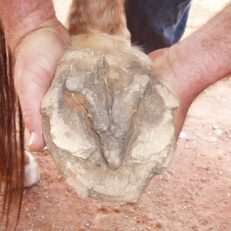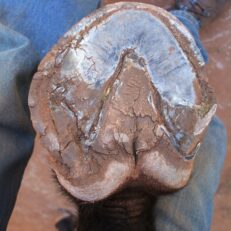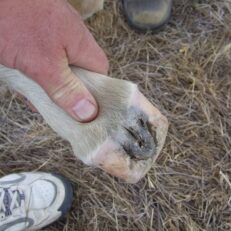This is without doubt the most important time for a reminder about hoof care in respect to mares and foals, and the old saying that prevention is better than cure comes to the fore.
As they approach foaling, mares carry a lot of extra weight and can suffer from hoof abscesses; the greatest majority of these are totally preventable if we just know what to look for. Abscesses occur in predictable places in the hoof, either in the front part of the sole, or the bar area near the heel. Often we make the mistake of just paddock trimming the mares during the year, whereas we should realise that it is extremely important to trim the hoof for soundness whenever it’s done.
An understanding of hoof anatomy and function shows that the horse requires a concave sole, no bar pressure on the ground, no flares in the outer hoof wall and an even weight-bearing hoof wall on the ground with slightly bevelled outer edges. Invariably we tend to leave too much thickness in the sole ‘for protection’ and this causes bruising forwards of the frog because it is too flat; it also leads to excess flaring in the front of the hoof wall. (Pic 1)
If when looking at the mare it is standing splay footed in front and cow-hocked behind, it indicates that there are flares on the outside hoof walls. (Pic 2) Flares are the cause of hoof wall separation which leads onto abscesses, which may also interrupt the breeding cycle of the mare just at the wrong time. This is totally preventable by carrying out a good hoof maintenance program all year.
Within ten days of being born, the foal should also be closely checked for alignment in the legs. This is a critical time when slight hoof adjustments can ensure that those young wobbly legs develop straight. Usually they will have a tendency to start toeing out with both fronts and hinds at this age and if they are not corrected now those flares will begin to turn the legs outwards. (Pic 3)
Foals left untrimmed until they are one month old are not only turning out, the toes will be running forwards as well, causing the heels to become dangerously under-run; the frog will also be losing contact with the ground , resulting in the heels becoming contracted. (Pic 4)
In many cases, early hoof trimming will be successful and beneficial, and for some foals you will need the services of both veterinarian and farrier to ensure a correct outcome. We must realise that the cost of good hoof care is insignificant when the benefits are so critical for the horse.



